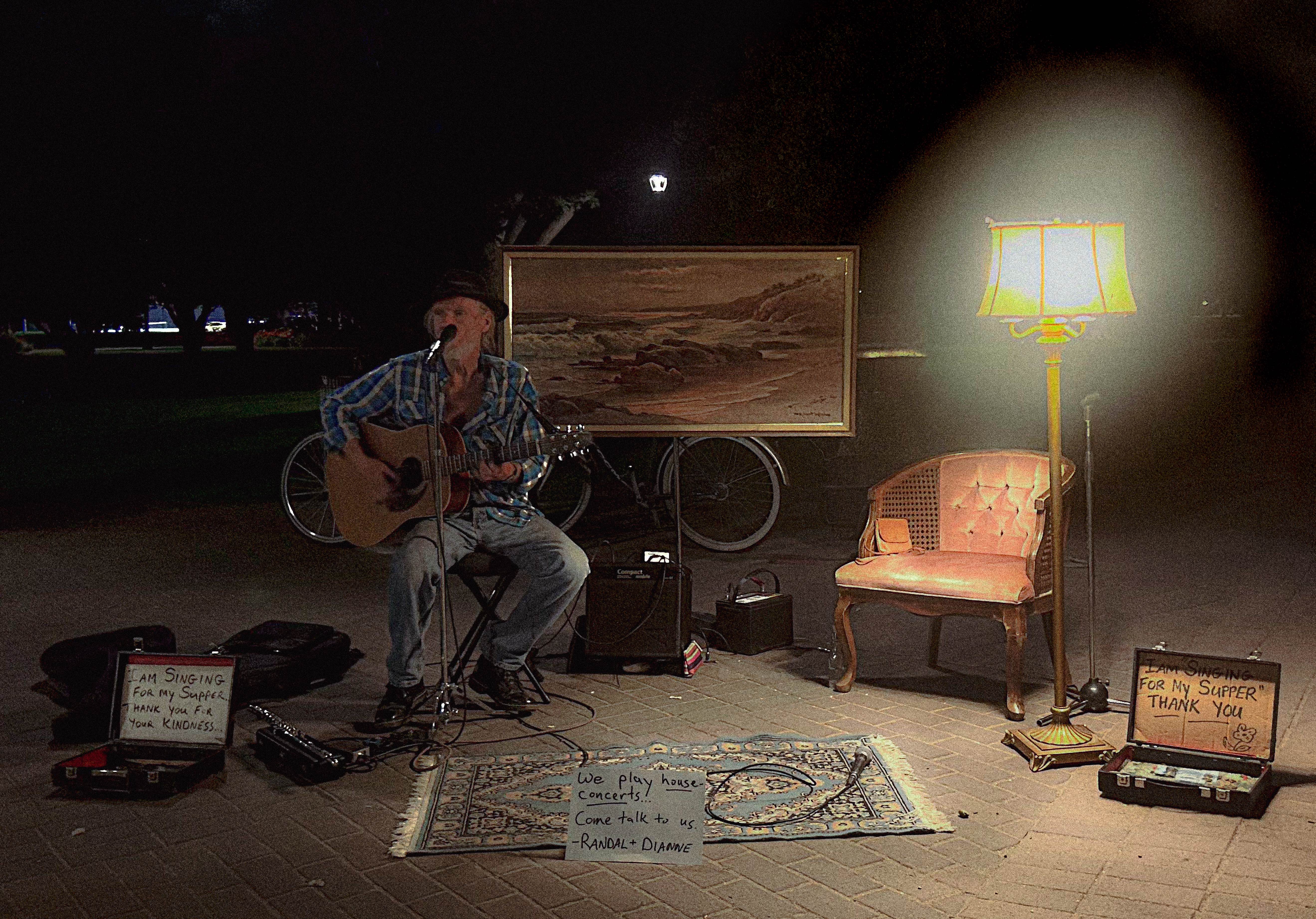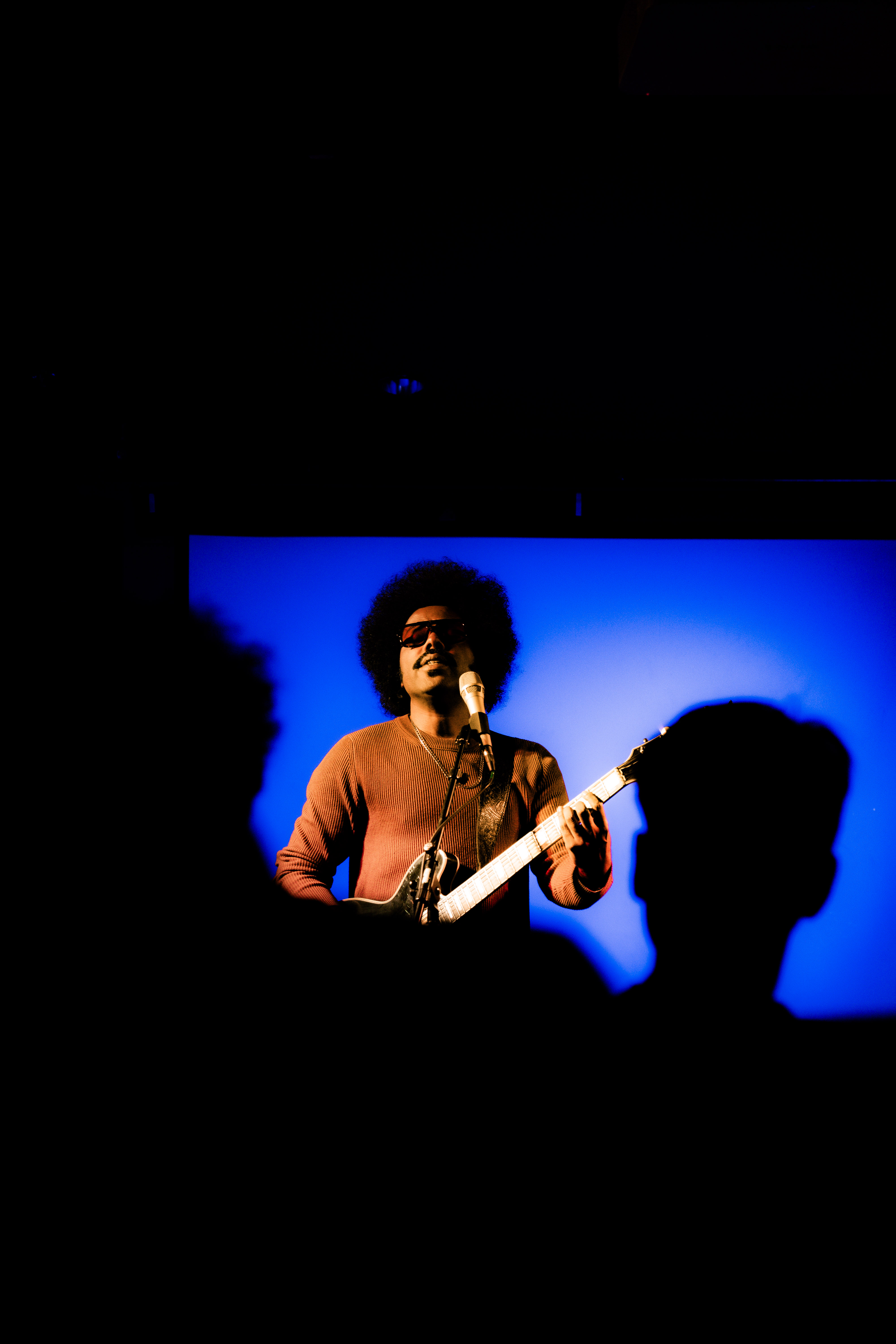
In the town where you grew up, you might remember some kind of public art, whether that be a massive statue, mural, or an installation. These pieces of public art often stand in front of large community buildings and landmarks, tying themselves to whatever town they may be in. But what is the significance of such art in a community, and how does that relate more specifically to the public art you see here in Kelowna?
Both on and off campus, you will see statues dotting major areas of the city. On a little shortcut to the Queensway exchange bay, just in between the Rotary Centre for the Arts and the Kelowna Art Gallery, you can see a handful of different exhibitions: giant concrete fruits with mosaic innards, light projections with animal sounds, piled up car bodies in white paint, and the like.
I will never disavow the funding of art. The public art here represents the city better than any metaphor could, with huge commissioned sculptures standing right next to scratched off stickers and pen graffiti — all of which I would define as public art. Kelowna is a city of dichotomies, with the ultra-rich next to the ultra-poor, tourists next to the oldest of locals, students bussing tables for retirees, and the downtown reaching up in the bowl of mountains and nature. As with any seeming opposites, they have more complicated relationships with each other than any outsider looking in could really understand. Artists and art help communities understand each other and bring to light concerns and thoughts of the public, as well as entertaining and providing them an escape from everyday stressors.
Both commissioned and graffitied public art aim to describe an experience within a community. The perspectives of these experiences are widely different, but that is a huge part of the beauty of all art.
However, when a government funds art, especially public art in a tourist heavy town, there is ample reason to be skeptical. Governments who receive lots of money from tourism want to continue to receive that money. Many people I had met before coming to Kelowna describe it as their favourite place to visit. People I have met that live here often have a much different opinion.
Public artists have a unique opportunity to communicate these differing perspectives to locals and visitors alike, as well as collaborate together to create pieces that represent the thoughts and feelings of the community at large. So why do we seldom see these collaborations on our everyday walks? Well, you do, but for a couple different reasons, these collaborations are not particularly long-lasting.
One night on my walk home from the bus I noticed in passing that someone had spray painted colour onto the grey skin of the concrete peach and apple, a representation of Kelowna’s strong agricultural community. I thought it was a wonderful branch between the worlds of graffiti and commissioned arts. Later in the week, I found that someone had scrubbed all the paint from the fruits. This attitude seems to reflect the far greater problem governments have with discussions between the previously mentioned ‘opposites’.
Obviously I do not know the whole story — and I will not try to say every piece of graffiti is meaningful — but it seems to me that the two forms of art have been placed so far away from each other that any attempt to cross the two becomes an offense. So where do these other perspectives go? They are created and scrubbed away just as easily, and budding artists with no other canvas are tossed away.
In university, you are barraged with success stories of people who have made it despite the odds, but what happens to those who do not? What happens to the people who try but never seem to figure it out? Everyone knows someone that is struggling in one way or another. When we are so far away from the people that are struggling that we do not even register their experiences and needs, our community falls apart.
When your neighbour just starts looking like a burden, you have removed yourself from your community. The art that we make is a reflection on our subconscious and conscious feelings about the world around us. When governments only fund art that they believe serves the purpose of simply beautifying a community for the sake of tourism, they are not fostering an art community in their city, they are fostering the look of art. This will ultimately cave on itself and leave only the abstractions of Kelowna’s culture: agriculture, work, cars, and dreams of light on pathways to the bus.



